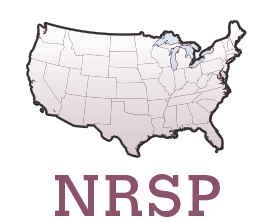
NRSP7: A National Agricultural Program for Minor Use Animal Drugs
(National Research Support Project Summary)
Status: Inactive/Terminating
Date of Annual Report: 06/21/2019
Report Information
Period the Report Covers: 09/01/2014 - 04/30/2015
Participants
John Babish, Minor Use Animal Drug ProgramRod Getchell, Cornell University
Ronald Griffith, Iowa State University
Meg Oeller, US FDA, Center for Veterinary Medicine
Amy Omer, US FDA, Center for Veterinary Medicine
Gary Sherman, USDA NIFA
George Smith, Michigan State University
Margaret Smith, Cornell University
Lisa Tell (via phone link), University of California - Davis
Brief Summary of Minutes
NRSP7 Business Meeting MInutes
Update: Western Regional Experiment Station Directors Meeting
John Babish reported on this meeting, which he attended to represent NRSP7. Comments were that there is a need to document the value of NRSP drug approvals, not the value of minor species in general. The group discussed the possibility of getting data from pharmaceutical manufacturers or the Agricultural Marketing Service. Data that FDA receives, for example from the industry marketers of sheep/goat CIDR devices, might be helpful.
GLP Studies
Eric Nelson (Director of the Division fo Compliance) and Vernon Touelle (Team Leader of the BIMO Inspections Team) met with the NRSP7 group to share goals, approaches, and ideas regarding GLP inspections. Emphasis in FDA is shifting from a "regulatory public health agency" to a "public health regulatory agency." In other words, finding violations is now not the primary focus. Support in the form of trainng via webinars and a "GLP roadmap for academic institutions" were discussed. This area is a challenge since the regulations are written with drug company R&D labs in mind. The group also considered where an NRSP7 archival site for paper and electronic records could be situated.
Report from USDA NIFA
Gary Sherman shared information about the proposed $33 million for anti-microbial resistance studies (would need to be approved by Congress) and the Foundation for Food and Agriculture Research (FFAR). The latter is a public:primvate initiative requiring a 1:1 match in funding, with the goal of pursuing scientific work that is not readily funded through other USDA/NIFA avenues. It is modelled on a similar foundation associated with NIH.
Regional Reports
Regional coordinators reported on work underway in each region, and FDA CVM reported on status of animal drug approvals. The compiled reports are in an attached document.
Accomplishments
<p>A study of the safety of strontium chloride for Chinook salmon fry was completed at Cornell University.</p><br /> <p>Goat CIDR effectiveness data was shipped to FDA/CVM for comment.</p><br /> <p>Target animal safety data for fenbendazole in pheasants was approved as complete by ONADE, and research results were published in Avian Disease.</p><br /> <p>Effiicacy studies for cattle fever tick control with ivermection were continued.</p><br /> <p>NRSP7 website was re-organized and updated with alisting of all on-going and completed studies.</p>Publications
<p>Griffith, R., M. Yaeger, S. Hostetter, L. Tell, S. Wetzlich, T. Vickroy, B. Lillie, W. MacFarlane, T. Laudenslager, E. Whitley, R. Dzikamunhenga, and W. Larson. 2014. Safety of fenbendazole in Chinese ring-necked pheasants (<em>Phasianus colchicus</em>). Avian Diseases 58:8-15.</p><br /> <p>Marmulak, T., L.A. Tell, R. Gehring, R.E. Baynes, T.W. Vickroy, and J.E. Riviere. 2015. Egg residue considerations during the treatment of backyard poultry. J. American Veterinary Medical Association 247(12):1388-1395.</p>Impact Statements
- Two cattle herds/pastures in Texas where cattle were fed ivermectin-containing tubs were totally cleared of cattle fever tick.